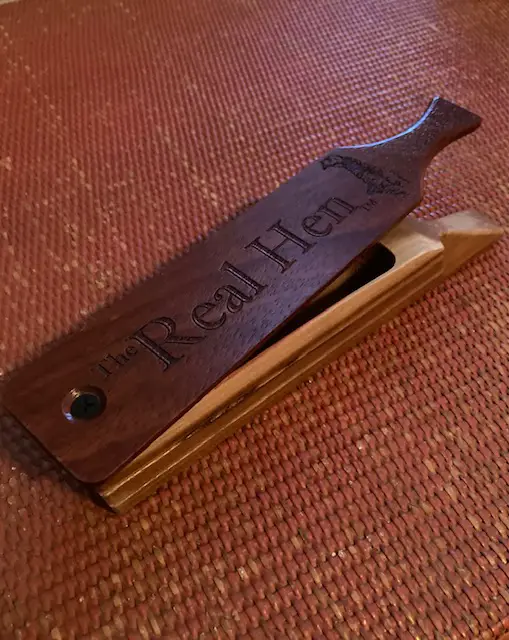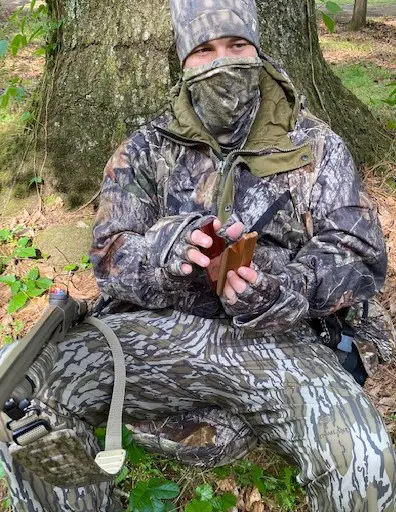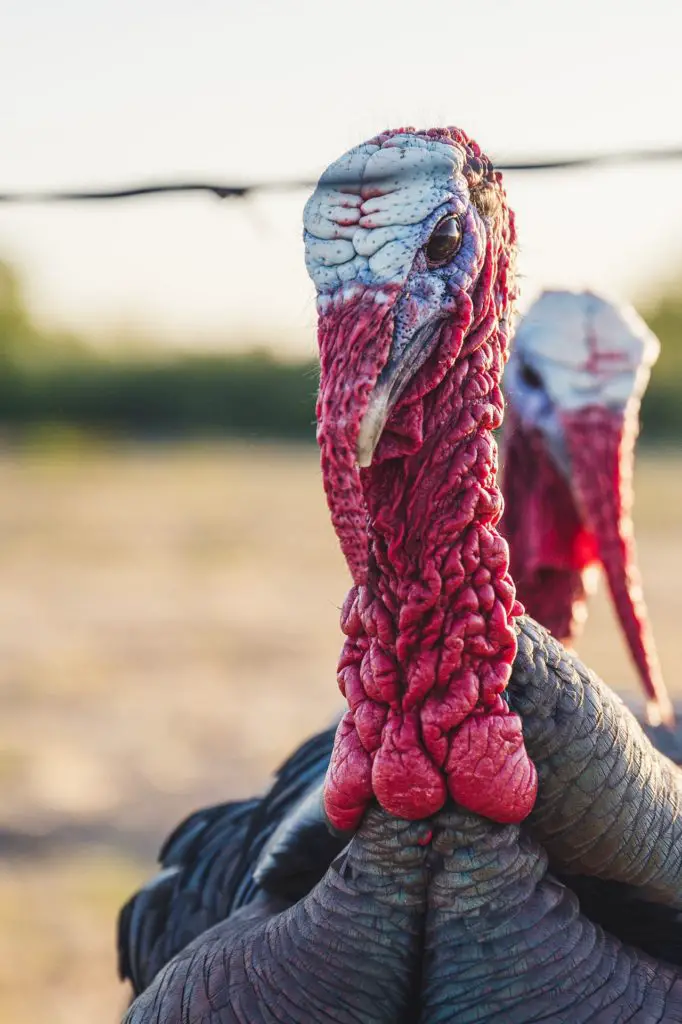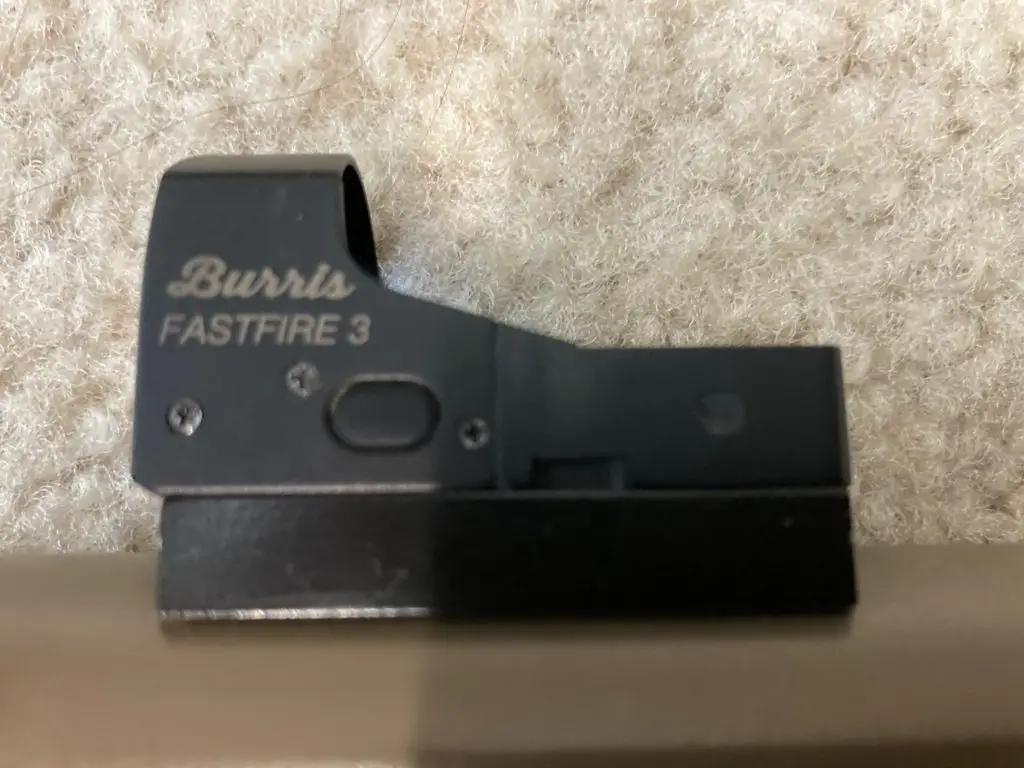
I hadn’t heard a gobble all morning. I’d been cold calling with two different pot calls and mixing in some mouth call work here and there. I’d called in nothing but a few deer.
I pulled my turkey box call out of my vest. All the usual doubts entered my head. I’m not good with it. It’s too loud. There aren’t any turkeys around to hear it.
I silenced the doubts and cranked out a series of seven yelps on the box call. I nearly jumped out of my skin when a tom almost cut me off with a gobble.
I can’t tell you how many times this scenario has played out for me. At some point, I will have to accept that my box call just works (perhaps in spite of me). Maybe one day I will actually practice as much with it as I do my other calls.
There are a lot of reasons to use a box call. I will detail a few of those before telling you how to choose and use one of these highly effective calls.
Why Use a Box Call
Turkey box calls offer two advantages. They are simple to use and they can get very LOUD.
As we will get into later, using a box call is pretty simple. Most people can pick up a box call and make some basic turkey sounds with a little instruction. The trick, as with any call, is mastering the cadence.
There are some days when the box call is your best friend. I’m talking about windy days. Your pot calls and mouth calls don’t have the reach that a box call is going to have. The trumpet is the only other type of call that you could argue carries as well as the box.
Turkeys can hear very well, but if the wind is blowing your sound the wrong way, you need all the volume you can get. Use your turkey box call to crank up the volume.
The ability to get loud is also useful when locating birds. Many hunters use their box as a locator call to get long-distance toms fired up.
A lot of turkey box calls have two sides. These sides will sound a little different. So if one side is not bringing in that longbeard, you can try the other side. This gives you a different sound without going to the vest.
And that’s not the extent of the box call’s versatility. If you don’t have a specific gobble call, you can also use your box call to gobble. I’ll show you how to do that in a minute.
So I’ve got you convinced that you need a box call. Let’s talk about how to go about choosing one for your vest.

Choosing the Best Turkey Box Call
Types of Box Calls
Within the box call category, there are several different types of calls:
- Short Box– The most common box call. A short box is easier to run than a long box, and much easier to fit into a bag, pouch, or vest.
- One-sided box-A box call with only one rail. You can’t gobble with it and you don’t have the second rail for more variety and playing positions. That said, yelping can be a bit easier with them. They are also easier to keep quiet when you are not using them.
- Long Box (Paddle Box)– As you might imagine, long boxes are longer than other calls. This makes them harder to carry but gives you an increase in versatility. Long boxes are good for kee-kee calls. Most long boxes will get a bit louder than short boxes.
- Scratch Box-Unlike other box calls, a scratch box does not have a hinge on it. It is a two-part call that you rub together to make noise. They are more compact than most other box calls. I will not go into much detail on scratch boxes in this article.
**Note: In this article, I am considering the push button call as a separate type of call from the traditional box call. You can read my article on push button turkey calls here.
Mass-Produced vs Custom Turkey Calls
Mass-produced (or production calls) are sold in a number of different stores and include popular brand names such as Primos, H.S. Strut, Quaker Boy, and Lynch. They are usually produced in large numbers.
Custom turkey calls are generally handmade by individual call makers or small teams of call makers. They are usually purchased from the call maker’s website, conventions, local shows, or by phone. Popular box call makers include Steve Mann, Albert Paul, Al and Josh Shoemaker, and David Halloran (read my overview of David Halloran Turkey Calls), just to name a few.
So which should you choose? Good question.
There are good and bad mass-produced and custom turkey calls. Many public land hunters feel that a custom call gives them a unique sound to stand out from the other hunters.
Mass-produced calls are usually less expensive than custom calls, but of course, there are exceptions. You usually will not be able to run a production call before purchasing it.
When buying a custom call, it is best if you can run it yourself before you purchase. Buy the one that sounds the best to your ear as that will give you the most confidence in the woods. If this is not possible, ask the call maker to play it over the phone for you.
Turkey Box Call Materials
Turkey box calls can be made from a number of different woods. The actual construction of the box is more important than the type of wood the box call is made of.
You will often see a turkey box call described as “cherry over poplar” or “walnut over butternut.” This simply means that the first wood listed is the lid of the call and the second wood listed is the box of the call.
Some popular woods for box calls include cherry, poplar, cedar, chestnut, bloodwood, limba, purpleheart, ebony, walnut, butternut, mahogany, and persimmon. Once again, try to play a few yourself before making a purchase.
How to Use a Turkey Box Call
It is easy to make a sound with a box call. In fact, it is hard to keep them from making noise when you don’t want them to.
Some callers hold the call with the hinge closer to their body while others hold it away from their body. Some will move the lid and hold the box still, while others hold the lid still and move the box. Different callers will hold the paddle between different fingers as well. There are no hard and fast rules to how you hold the box call. Pick what is comfortable for you.
The following video will show you how to make the basic sounds. I also explain it below. If you are not familiar with what the different sounds mean, read my article on the seven essential hen turkey sounds.
The basic yelp is simple. You slide the lid across the rail of the box. You will hear the high end and then the low end of the yelp. From there it is just about timing.
The cluck is not hard to make either. Most people use the thumb of their left hand as a stopper or spring for the lid. They will then take their right hand and tap the edge of the lid to make a cluck.
To cut, just tap the box at different timing intervals. Hen cutting does not have a definitive rhythm so use several series of one to three notes.
Purring on a turkey box call requires you to slowly slide the lid across the rail. It takes a little practice to get it, so don’t get frustrated if you don’t manage it right off the bat. Try different hand placements until you find what works for you.
If you want to gobble, you need to run the lid across both rails to create the gobble. Experiment with different holds to find the right feel. You can also try putting rubber bands around it and shaking it. Some turkey box calls will gobble better than others.
Maintaining and Carrying a Box Call
You should not have to chalk your turkey box call very often, but if you do, be sure NOT to use oil-based chalks. Try to use chalks specifically designed for box calls. Different color chalks may influence the pitch or rasp a call has.
Be sure to keep your box call dry. Store it in a plastic container in the offseason. A Tupperware container or bread bag will fit the purpose.
You can actually tune your box call if you don’t like the way it sounds. To do this, take a screwdriver and tighten or loosen the screw attaching the lid to the hinge. Experiment with different turns until you find the tone you are looking for.
One of the most aggravating things about box calls is the inadvertent noises they make as you carry them in your vest, pocket, or bag. Many manufacturers or call makers will provide a strap or mechanical device to keep the lid from scratching against the rail too much as you walk.
If your box call doesn’t come with anything to secure it, try some of the sturdier rubber bands, velcro straps, or bungees to keep the lid from moving too much during transport.
Conclusion
A turkey box call is an essential tool for a windy day hunt. It could be the difference between that turkey hearing you or not. And some days, it is the only sound that gobbler will answer to.
Try to get to the next turkey exhibition near you to try out calls from some custom call makers. I’m sure you will find a box that is full of turkeys. After that, practice until you feel comfortable or your wife kicks you out of the house.
If you enjoyed this article, you may also like my article on mouth calls and my article on slate calls.



